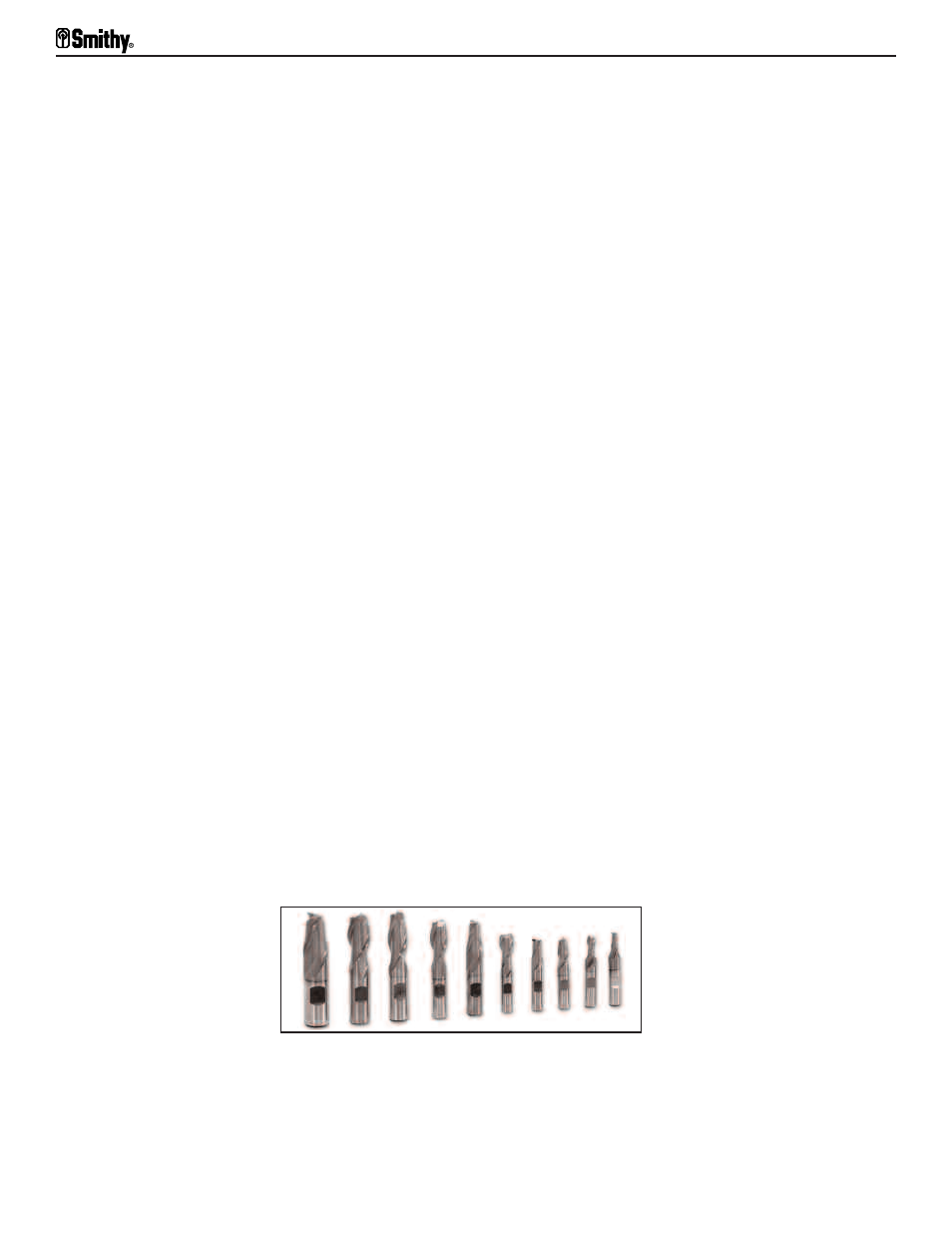Miling cutters, End mill cutters – Smithy Midas 1220 LTD User Manual
Page 82

5.
Holding the adapter with one hand, use a non-marring hammer (rubber, dead-blow, or
brass) to drive the drift into the slot. The taper on the tool will release and the adapter
drop out.
Cutters mounted in the spindle must fit accurately. There are two ways to make sure they
do. For small cutters, fit the shank of the arbor that carries the cutter directly into the
taper hole at the end of the spindle. A drawbar holds the arbor in place. For large
cutters, bolt the cutter directly to the end of the spindle.
Miling Cutters
Choose milling cutters for the type of cut, the number of parts, and the material. Rake
angles depend on both cutter and work material. Clearance angles range from 3° to 6°
for hard or tough materials to 6° to 12° for soft materials.
To determine the number of teeth you want, consider the following:
• There should not be so many teeth that they reduce the free flow of chips.
• The chip space should be smooth so chips don't clog.
• Don't engage more than two teeth at a time in the cut.
End Mill Cutters
End mill cutters cut on their ends and sides. They are either solid (cut from a single piece
of material) or shell (separate cutter body and shank). They have two, three, four, or
more teeth and may do right or left-handed cutting. Their flute twist or helix may also be
right or left-handed. Solid end mills have straight or tapered shanks; shell end mill
adapters have tapered shanks.
End mills machine horizontal, vertical, angular, or irregular surfaces in making slots,
keyways, pockets, shoulders, and flat surfaces.
• Two flute, or center-cutting end mills have two teeth that cut to the center of the mill.
They may feed into the work like a drill (called plunge milling), then go lengthwise to form
a slot. Teeth may be on one end (single-ended) or both ends (double-ended).
Figure 17.5 Two-flute end mills have two teeth that cut the center of the mill
• Multiple flute end mills have three, four, six, or eight flutes and may be single or
double-ended. Multiple-flute mills are center cutting or non-center cutting. Don't use
non-center cutting end mills for plunge milling.
Midas 1220 LTD Operator’s Manual
17-4
For Assistance: Call Toll Free 1-800-476-4849